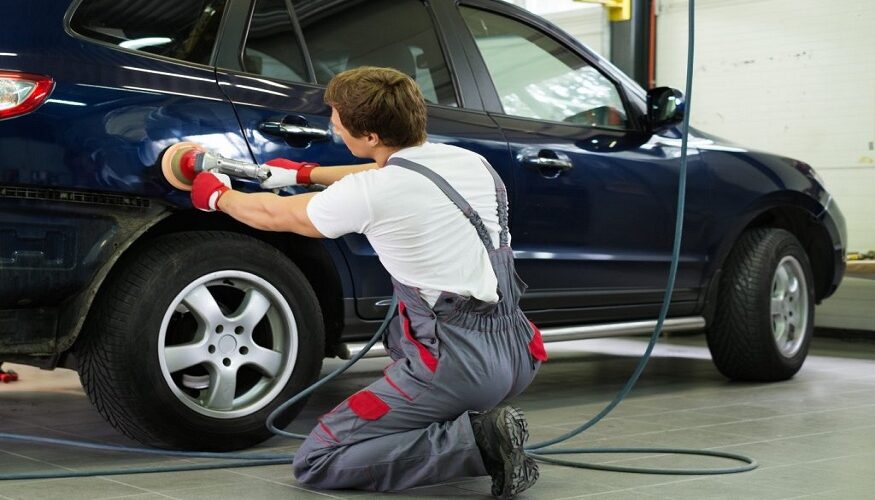Understanding the Art of Car Body Repairs
Owning a car can be a source of great pride, but it’s also a responsibility. Over time, our beloved vehicles may suffer from wear and tear, as well as minor to major damages from accidents. These blemishes and dents not only compromise the aesthetics of our cars but can also lead to more severe issues if left unattended. Fortunately, the art of car body repairs exists at garages like body shop Wimbledon, offering a comprehensive solution to restore your vehicle’s beauty and maintain its structural integrity.
In this blog, we will delve into the world of car body repairs and explore the techniques, tools, and steps involved in rejuvenating your car’s appearance. From understanding the types of damages to repairing them like a pro, we’ll equip you with the knowledge necessary to make informed decisions about your car’s restoration.
Types of Car Body Damages
Before embarking on a car body repair journey, it’s essential to identify the different types of damages that can affect your vehicle. Some common issues include:
- Dents and Dings: Small dents caused by hail, door dings, or minor collisions that create depressions in the car’s body panels.
- Scratches and Scuffs: Surface-level damages caused by contact with rough objects, keys, or other vehicles.
- Rust and Corrosion: The exposure of metal surfaces to moisture and oxygen leading to rust formation, which can compromise the car’s structural integrity.
- Cracks and Breaks: More severe damages resulting from accidents or collisions that can impact the functionality and safety of the vehicle.
The Art of Car Body Repair
Car body repairs involve both science and art. Skilled technicians merge practical techniques with a keen eye for detail, ensuring that the final result is not only structurally sound but also visually appealing. Here are some essential steps in the car body repair process:
- Assessment and Preparation: A thorough inspection of the car’s damages is conducted to assess the extent of the problem. The technician will then prepare a plan for the repair process, identifying the materials and tools needed.
- Surface Preparation: Before any repairs can begin, the damaged area needs to be cleaned and stripped of any paint, rust, or debris. This step ensures proper adhesion of the new materials.
- Dent Removal: For minor dents, technicians may use techniques like paintless dent repair (PDR), which involves massaging the dent out from the inside of the panel without disturbing the paint.
- Body Filling: For deeper dents or areas with missing metal, body fillers are used to reshape and smoothen the damaged surface.
- Priming and Painting: After the repairs are complete, the area is primed and painted to match the car’s original colour, giving it a seamless finish.
- Blending and Buffing: To ensure a flawless result, the new paint is blended with the existing paint, and the repaired area is buffed to achieve a consistent shine.
Mastering Car Body Repairs: DIY Tips and Advanced Techniques
We have explored the types of car body damages and the fundamental steps involved in the repair process – lets delve deeper into the world of car body repairs, offering DIY tips and advanced techniques to help you achieve professional-grade results.
DIY Tips for Minor Damages
While some car body damages may require professional attention, you can handle minor issues yourself with some basic tools and techniques:
- Scratch Repair: For small scratches and scuffs, you can use scratch removal kits available in the market. Clean the area, apply the provided compound, and buff the surface until the scratch disappears.
- Dent Removal: Minor dents can be tackled with hot water or a hairdryer and a can of compressed air. Heat the dent with hot water or a hairdryer, then use the compressed air upside down to spray the area. The sudden temperature change can cause the dent to pop back into place.
- Rust Prevention: To prevent rust from spreading, clean the affected area thoroughly and apply a rust converter or primer. Once dry, use touch-up paint to seal the area.
Advanced Techniques
For more significant damages or for those who are keen on learning advanced techniques, here are some methods used by professionals:
- Welding: Skilled technicians use welding techniques to repair areas with severe damage or metal fatigue. Welding involves melting metal to fuse the damaged parts, ensuring a strong and durable repair.
- Panel Replacement: When a car body panel is severely damaged or beyond repair, professionals may opt to replace the entire panel with a new one. This process requires precision and expertise to fit the new panel seamlessly.
- Paint Matching: Achieving a perfect paint match is essential for a flawless repair. Professionals use colour-matching technology and techniques to ensure the new paint blends seamlessly with the existing paint.
Safety Considerations
Whether you’re attempting DIY repairs or simply understanding the process, safety is paramount:
- Personal Protective Equipment (PPE): When handling tools, chemicals, or repairing car body damages, always wear appropriate PPE, including safety goggles, gloves, and a respirator if needed.
- Ventilation: If you’re working with paints or chemical compounds, ensure proper ventilation in the workspace to avoid inhalation of harmful fumes.
- Professional Assistance: For major damages or if you lack experience, seeking the help of a professional car body repair technician is the safest option.
Mastering the art of car body repairs involves a blend of knowledge, skill, and practice. While some minor damages can be tackled with DIY techniques, more significant issues require the expertise of a seasoned professional. Remember, safety should always be a priority when working with tools, chemicals, or repairing damages.
By understanding the intricacies of car body repairs and the steps involved in the process, you’ll be better equipped to make informed decisions about maintaining your vehicle’s beauty and structural integrity.
We hope this comprehensive guide has shed light on the art of car body repairs and empowered you to take the best course of action for your cherished automobile. Remember, a well-maintained and beautiful car not only enhances your driving experience but also reflects the pride of ownership you have for your four-wheeled companon. Happy repairing!

